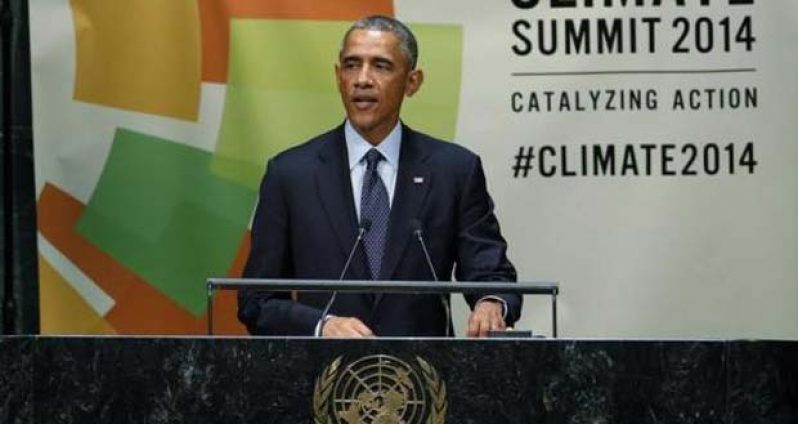AN endorsement from US President Barack Obama of Guyana’s Low Carbon Development Strategy (LCDS) and the focus on non-renewable energy, via the Amaila Falls Hydropower project (AFHP), was the primary take-away from last week’s talks in Jamaica.Head of the Presidential Secretariat (HPS), Dr. Roger Luncheon, made the disclosure yesterday at his weekly post-Cabinet press briefing, held at Office of the President in Georgetown.
“President Obama was essentially saying this is the way of the future,” Dr. Luncheon told reporters.

The United States President met with President Ramotar and other Caribbean Community (CARICOM) Heads of Government in Jamaica, last Thursday.
The hydropower project is touted to be able to provide Guyanese with a cheaper, reliable and sustainable electricity supply. It involves the construction of a hydropower plant in the area of West-Central Guyana, where the Amaila and Kuribrong Rivers meet. Electricity produced there will be delivered to Georgetown and Guyana’s second largest town, Linden. The AFHP is anticipated to result in substantial savings to the nation’s coffers, particularly in terms of foreign exchange for the purchase of heavy fuel oil, as well as create many opportunities for jobs, among other advances.
Meanwhile, the strategy outlines Guyana’s vision of promoting economic development, while at the same time combating climate change. The revised version was published on 24th May, 2010 and subsequently the LCDS update was launched in March 2013 by President Donald Ramotar.
Dr. Luncheon explained that the meeting was a brief one lasting a few hours. “I suspect that one would have to recognise that an opportunity was provided by President Obama on his way to Panama on his way to the Summit of the Americas,” he said.
Advances in the energy sector, as well as citizen security, fighting crime and tackling the drug problem were the areas of discussion from which President Ramotar expected results.
The last word from the U.S. Embassy here was that investment relationships between Guyana and the United States are growing.

CO-OPERATION
According to the former U.S. Ambassador, Brent Hardt, several U.S. companies are interested in doing business here.
“We’re each other’s closest trade partners in the sense that I think the trade relations between us is the biggest of any countries,” he said in an interview with the Chronicle, prior to his departure.
Noteworthy is the fact that the Ambassador highlighted Guyana’s potential in the oil and gas field, which he said is increasingly becoming a point of interest for U.S. investors.
Hardt said, “We’ve worked to encourage U.S. investors to come here, and I know as the oil and gas field becomes increasingly of interest here in Guyana, we’ll hopefully see more U.S. companies engaging in that area. There is already interest, and we look forward to seeing more and more companies here.”
In the area of security, the Caribbean Basin Security Initiative, President Obama’s initiative, is one such area of cooperation. Launched in 2010, it has so far provided over US$263M in support to the Caribbean, with Guyana being a major recipient.
The U.S. has also provided metal shark boats to the Guyanese Coast Guard, facilitated training from the Federal Bureau of Investigation (FBI), and worked on improving security at Guyana’s main entry points.

The US President’s Emergency Plan for AIDS Relief (PEPFAR) is another programme where much work has been done, particularly in ensuring delivery of medications in a timely manner.
In the non-traditional agriculture and aquaculture, USAID offers support to continuously advance in this regard, as well as in the area of eco-tourism and in addressing social issues. (Vanessa Narine)



.jpg)









